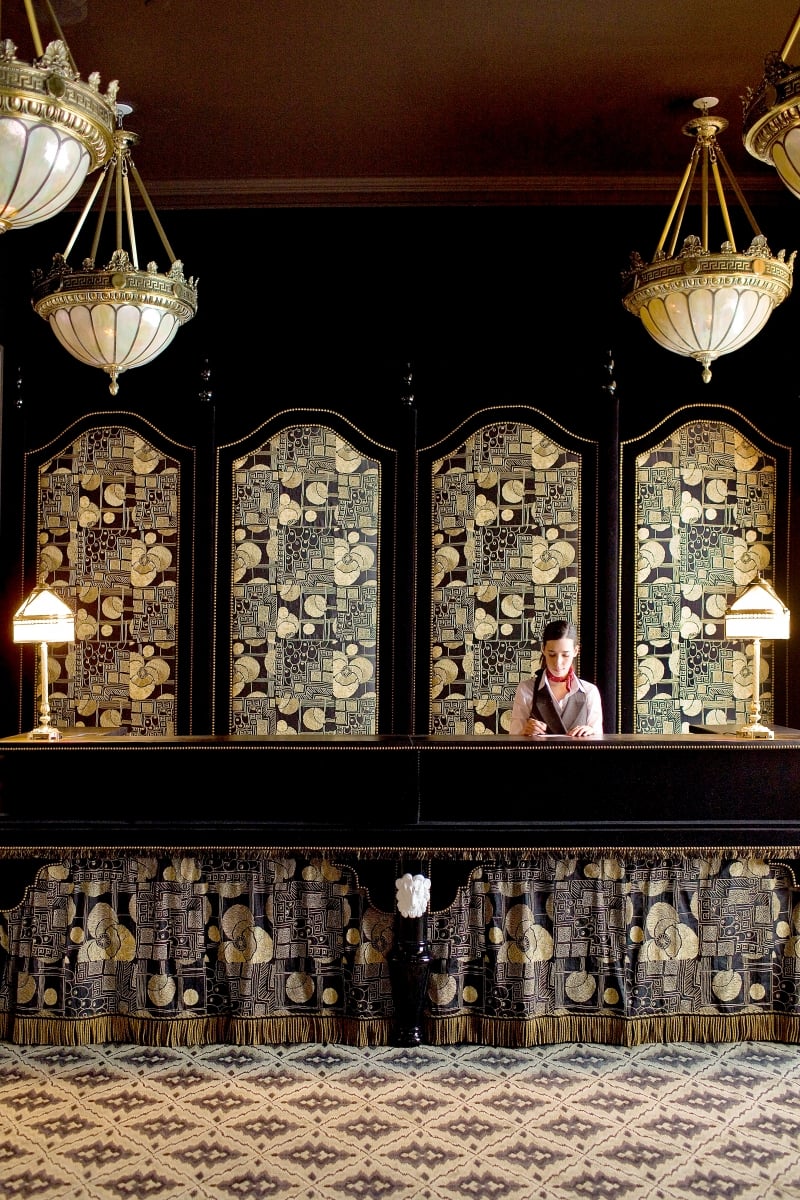
May 7, 2013
Six Hotel Leaders Opine on the Industry’s Future
In an increasingly smaller and more wired world, the challenge for hotels today goes beyond the logistics of lodging, and now includes illusive and ephemeral offerings.

The reception desk at the Paris-inspired NoMad Hotel, designed by interior designer Jacques Garcia. The Sydell Group renovated and restored the 1905 Beaux Arts building, located on 28th Street and Broadway, in New York City.
Courtesy Benoit Linero
The hospitality business is undergoing rapid change: Technology and globalization are ushering in a period of delirious uncertainty. The rise of social media has made us all hotel critics. Instant access to information has turned clueless tourists into travel connoisseurs. We sign into hotels today seeking not just lodging, but an experience. To assess these changes and chart a direction forward, we talked to six design leaders in the hospitality field: Mike Tiedy, a senior vice president at W Hotels; Andrew Zobler, CEO of the Sydell Group; Johan Michelson, Scandic’s vice president of brand and product; Claus Sendlinger, CEO of Design Hotels; Alex Calderwood, founder of the Ace Hotel; and Ian Schrager, the man who reignited the industry 30 years ago. Their ideas on the future of the hotel are as intriguing as the places and spaces they create. —Martin C. Pedersen
W HOTELS
Mike Tiedy, Senior Vice President, Global Brand & Innovation
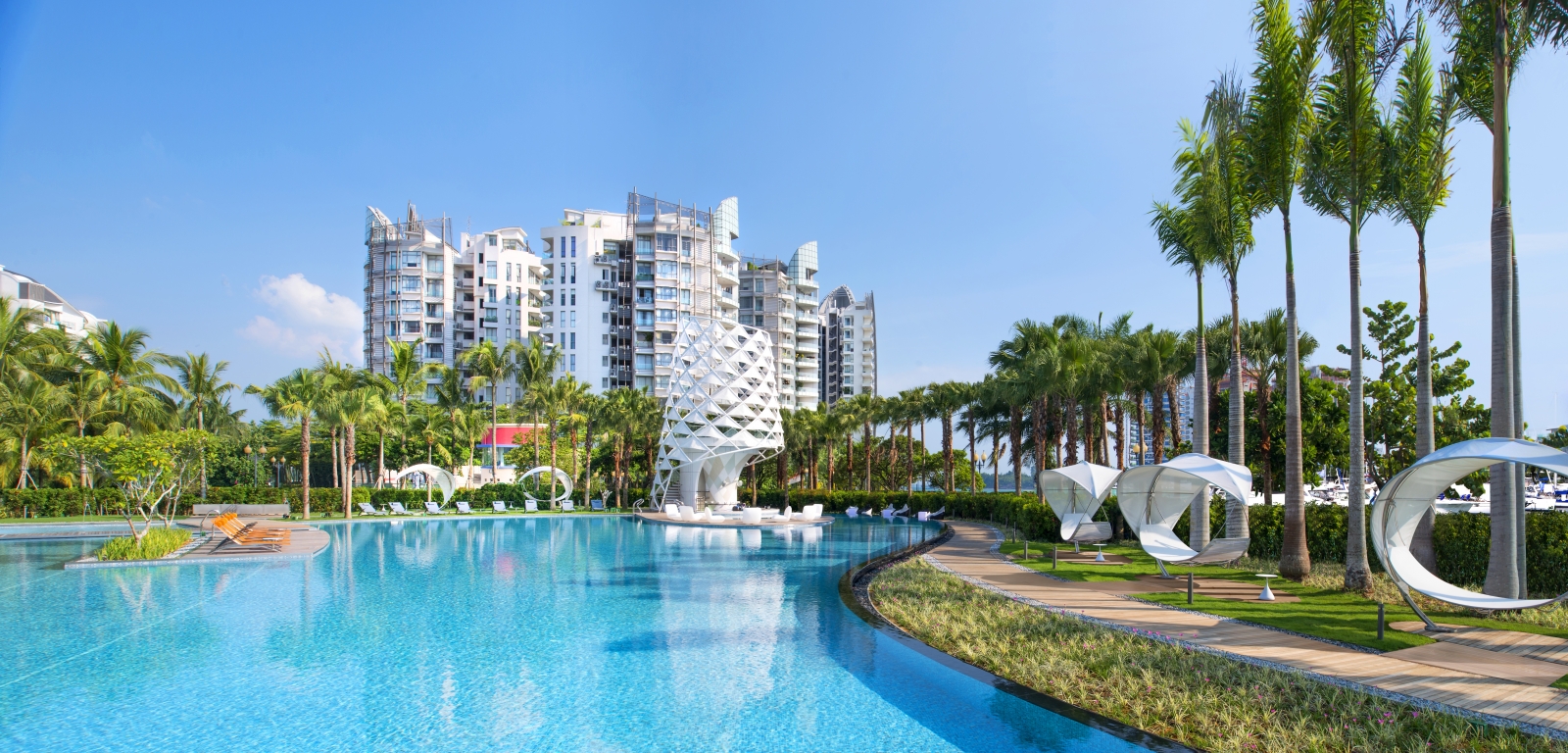
W Singapore: The W Hotel in Singapore is a large mixed-use development that includes residential and commercial establishments. The architecture firm was London-based WATG; Cicada Private Limited designed the waterfront park.
Courtesy W Hotels Worldwide
Before the First Line is Drawn
When it comes to the design of the hotels, we use what we call the narrative process. We do a lot of research around the historical, social, and physical aspects of the hotel and the environment where it’s going to be. And when I say “physical” I don’t necessarily mean the hotel’s architecture, but what’s around it. Is it near an ocean? What are the weather conditions? Is it framed by a mountain range? For the social, it’s about trying to dive deeper into the local culture—understanding history and what the people are like, making sure we are respectful and have that cultural integrity. But there also might be nuances that we can use to make a story. When we pull all of that together, we align on a key directive for that hotel with some descriptions and interpretations. And that’s what we use to drive the story forward.
The New Social Dynamic
Because people have their electronics, our guests are moving out of the rooms. It’s like they have the ability to sit in a lobby socially and be involved with other people, but not be engaged. They want to kind of be alone together.
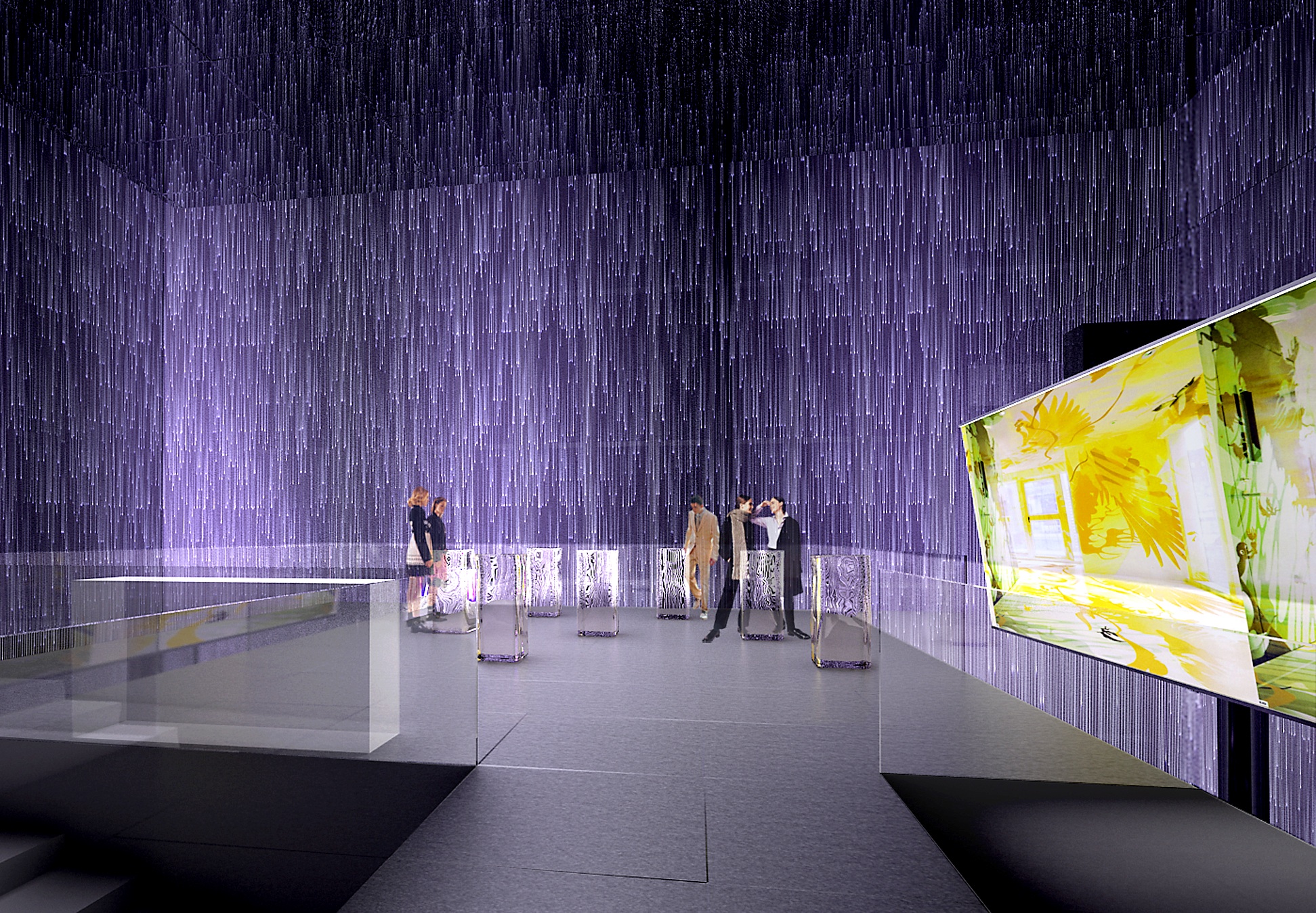
The brand’s newest property, W Guangzhou, a 317-room hotel in China, opened in March. Rocco Yim designed the building; Yabu Pushelberg handled the interiors.
Courtesy W Hotels Worldwide
Big Brother is Watching
There’s a lot of conversation around big data. What do we know about the consumer who’s coming in, and how do we use that in a way that allows them to have a richer experience? How do we cater to whatever needs you may have, provide more consistency in your experience, if that’s what you want? How do we ease the transactional part of the business with technology, eliminate lines, and make things happen so you can get where you want faster? A lot of the big data results in simplicity on one side and personalization on the other.
SYDELL GROUP
Andrew Zobler, CEO
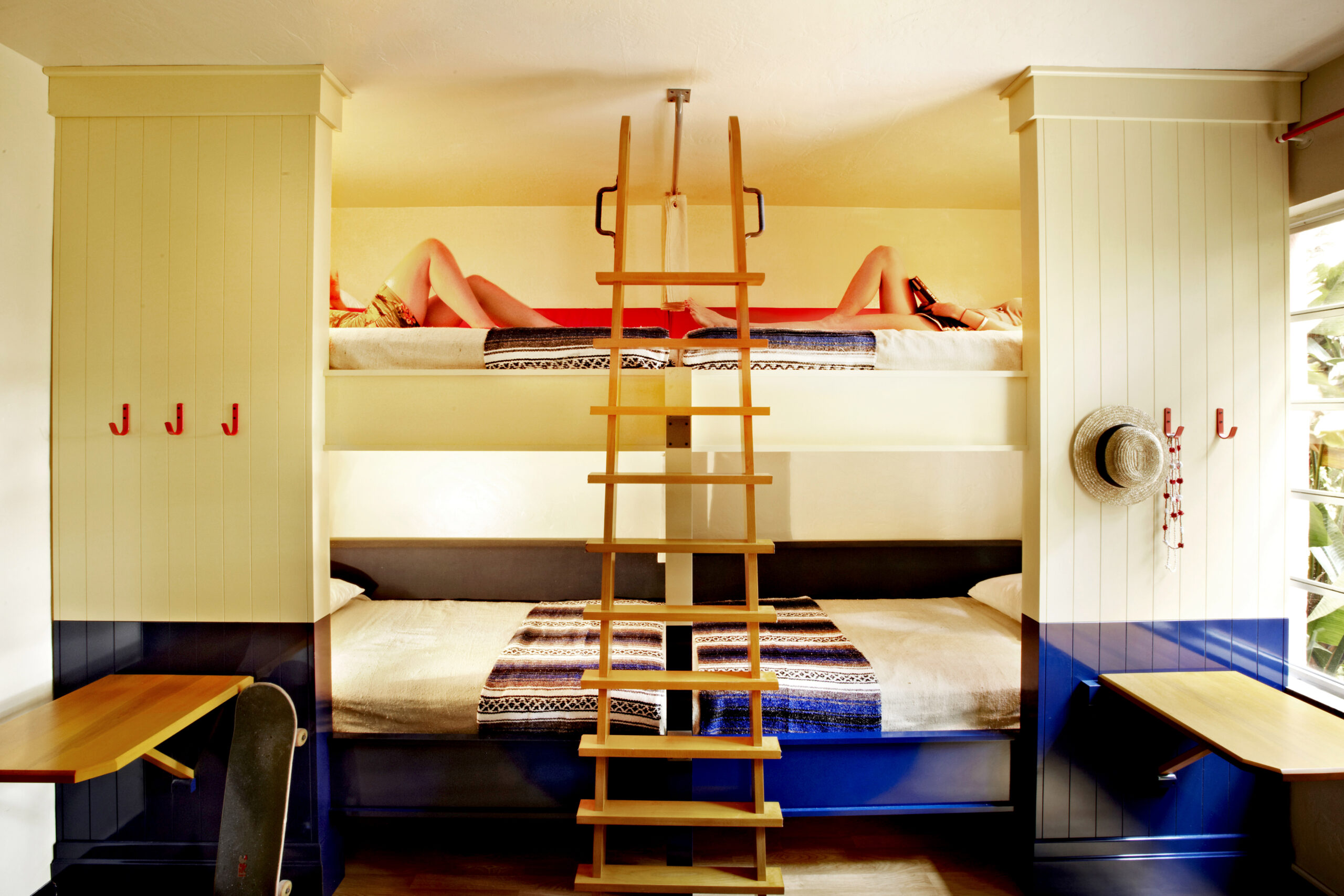
Freehand Miami: This upscale hostel, designed by Roman and Williams, was developed by the Sydell Group, one of the initial investors in the Ace Hotel. The group’s first Line hotel will debut later this year in Los Angeles.
Courtesy Adrian Gaut
Seizing Opportunities
We’re opening a hotel in Los Angeles in August or September, which we’re calling the Line. It’s an existing 400-room, concrete, glass-and-curtain wall, Brutalist building. We think it’s neat architecture. People were a little confused about that property because it was in Koreatown. But that’s exactly the kind of project we find intriguing. We find locations that other people don’t know how to deal with. We tend to think of our- selves more as real estate people. We find assets that other people undervalue or don’t understand, and we figure out what to do with them.
The Sophisticated Traveler
People used to like to stay at the Marriott or the Sheraton because they knew what they were getting. In the information age, you can go on Trip Advisor and see pictures of everything, read reviews, look at articles. So people are much more willing to experience new things. They don’t feel like it’s going to be a surprise. The surprises are generally positive, so they’re looking for an experience in traveling. We’ve seen a real growth in lifestyle hotels and we’ll continue to see that over the next few years.
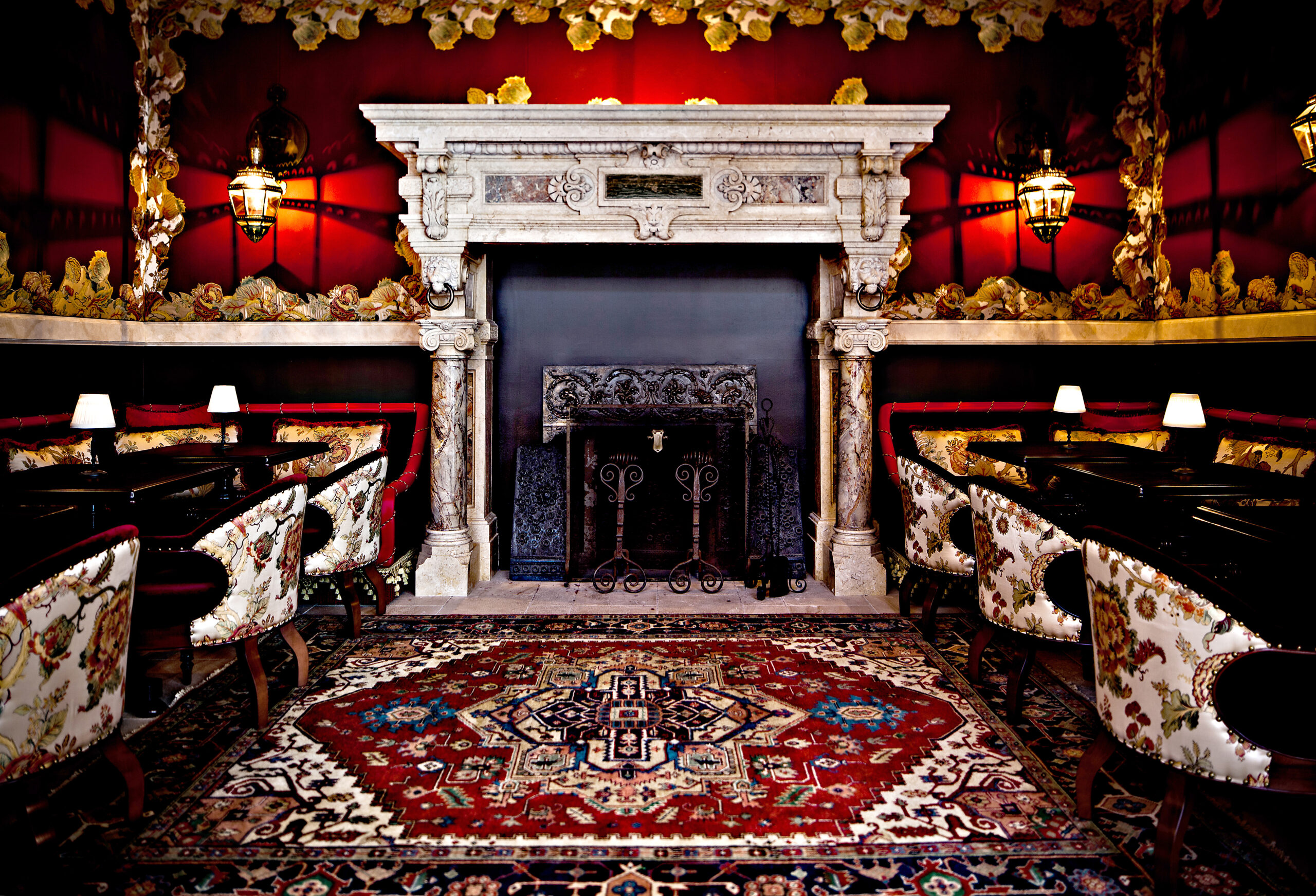
NoMad Hotel, NYC: Jacques Garcia’s lobby for the New York City hotel fuses turn-of-the-(last)-century French luxury with a sort of Ace-inspired bohemian flair.
Courtesy Benoit Linero
Local Flavor
When we go into a place, we almost always find people who are deeply rooted in the community and bring them together. That’s how we create hotels. When we started work in Los Angeles, we found this hotel in Koreatown. But we didn’t say, “Here’s our secret sauce that worked in New York City; let’s do it again in L.A.” Instead we said, “Let’s find some Angelenos and work with them.”
SCANDIC
Johan Michelson, Vice President of Brand and Product

Scandic Paasi, Helsinki: Located in a heritage property next to the Congress Paasitorni Centre, Scandic Paasi is the group’s first story hotel.
Courtesy Scandic
Instant Feedback
When you come to a hotel today, you want to experience something new and share that experience with people. Social media plays a major role in that. We can see that cus-tomers checking in at our hotels immediately start to upload things to Instagram and Facebook, telling people about how great this hotel was, or how nice this design feature was, or how bad the check-in was, or look at this poor solution in the bathroom. We have to be aware of that. And we also need to be aware that if we design a hotel that is worth talking about, people are happy to do that, and they can do it very rapidly now. We try to build those talking points into all our hotels now so they spread the word.
Wall Stories
We’ve created a nice link here between the place where the hotel is located and the design of the hotels. We’ve individually designed the wallpapers for each hotel. We go into the town where the hotel is located, and we identify things that the place is famous for—it shouldn’t be the most obvious things that everybody knows about, but a bit more hidden—and then we have a designer create a pattern from this for the wallpaper that we put into the rooms. We’ll have 25 different wallpapers in 25 different Scandic hotels, so you can always understand which hotel you’re in, and it tells you something about the history of that place.
Women Rule
Historically, hotels have been designed and developed for the male business traveler. But we’ve decided to put female travelers on top, when it comes to designing our new properties. Why? For 70 percent of leisure travelers, all of the key decisions are made by women. So it’s important for us to cater to their needs. We also see that they’re increasingly important when it comes to business travel. And I think that will increase in the future, because girls do better than boys in school. They’re more likely to go to university and graduate, much more likely to get top positions. The hotel chains that want to be successful in the future will need to design with women at top of mind.
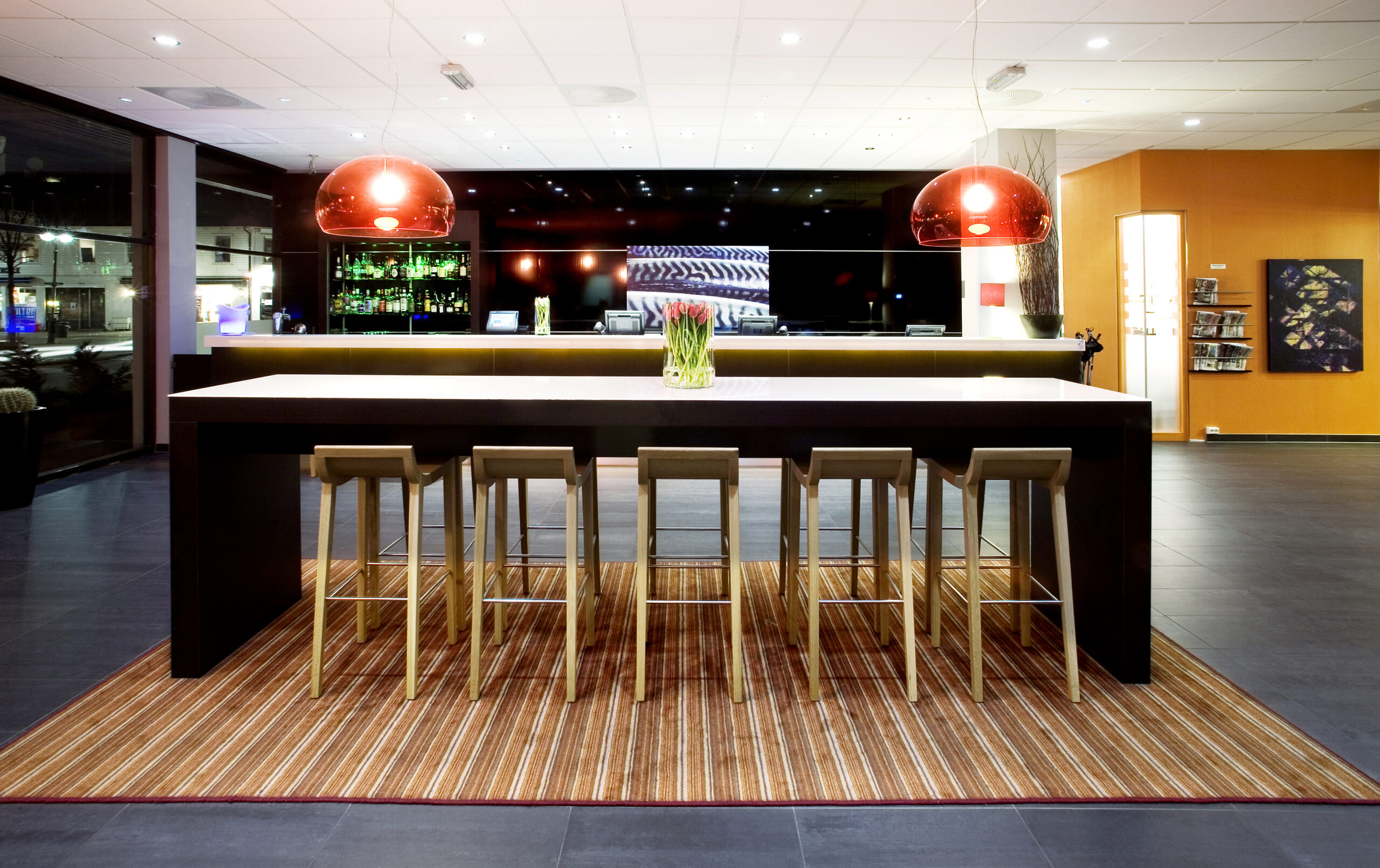
Scandic Kristiansand, Norway: In addition to its existing property in Kristiansand, Norway (below), the group is opening a much larger hotel in the city this spring. “We are in an expansion mode,” Michelson says.
Courtesy Scandic
Fine-Tuning the Green Machine
We don’t run sustainability projects; we run a sustainable business. That’s a part of our DNA. The first five or ten years we could make giant leaps every year, but now we’re at such a high level that it’s about fine-tuning. We’re changing the TV sets in all our hotels to LED TVs. That’s 30,000 televisions. We’re recycling all those old TVs, but we also talked with our supplier, Philips, and persuaded them to get Swan Label [a Nordic sustainability standard] TVs in their assortment. We told them, “If we’re going to buy from you, you need to change the way you produce your TVs so that you can get this label.” They agreed to that.
DESIGN HOTELS
Claus Sendlinger, CEO

Casa sull’Albero, Malgrate, Italy: Opening to visitors this May, this sunlit landmark property on the shores of Lake Como was created by the self-taught designer Andrea Colzani as a way to experience rural Italy.
Courtesy Design Hotels
Taking It to the Next Level
When it comes to sustainability, we want to help our hotels to improve their operations, so we’re collaborating with an organization called Earth Check. It was founded in the 1980s by the Australian government and has collected more than 30 years of data. It’s the world-leading certification institute for sustainable hospitality operations. So with Earth Check as a reliable source for measuring our hotels, we added a team of young creative sustainability engineers, philosophers, social media experts, filmmakers, and so on. They’re currently traveling through Europe meeting with innovators in design, architecture, mobility, and food.

The Thief, Oslo: This new luxury hotel is part of the urban renewal of Oslo’s Tjuvholmen waterfront district, which was once known as Thief Island. Art chosen by the curator Sune Nordgren fills the interiors designed by Anemone Wille Våge.
Courtesy Design Hotels
The Incredible Shrinking World
Nobody needs a guide to navigate Fifth Avenue. It’s more interesting if you go to the Lower East Side or Brooklyn. This is what the affluent traveler is looking for. He’s no longer looking for the next Prada shop. He has heard about Mast Brothers in Brooklyn, who do this great chocolate. This has a lot to do with what hotels need to know in curating not just their four walls but the neighborhood that they’re in. Now when you go to London, you’re not going to London anymore. You’re going to Notting Hill or Shoreditch.
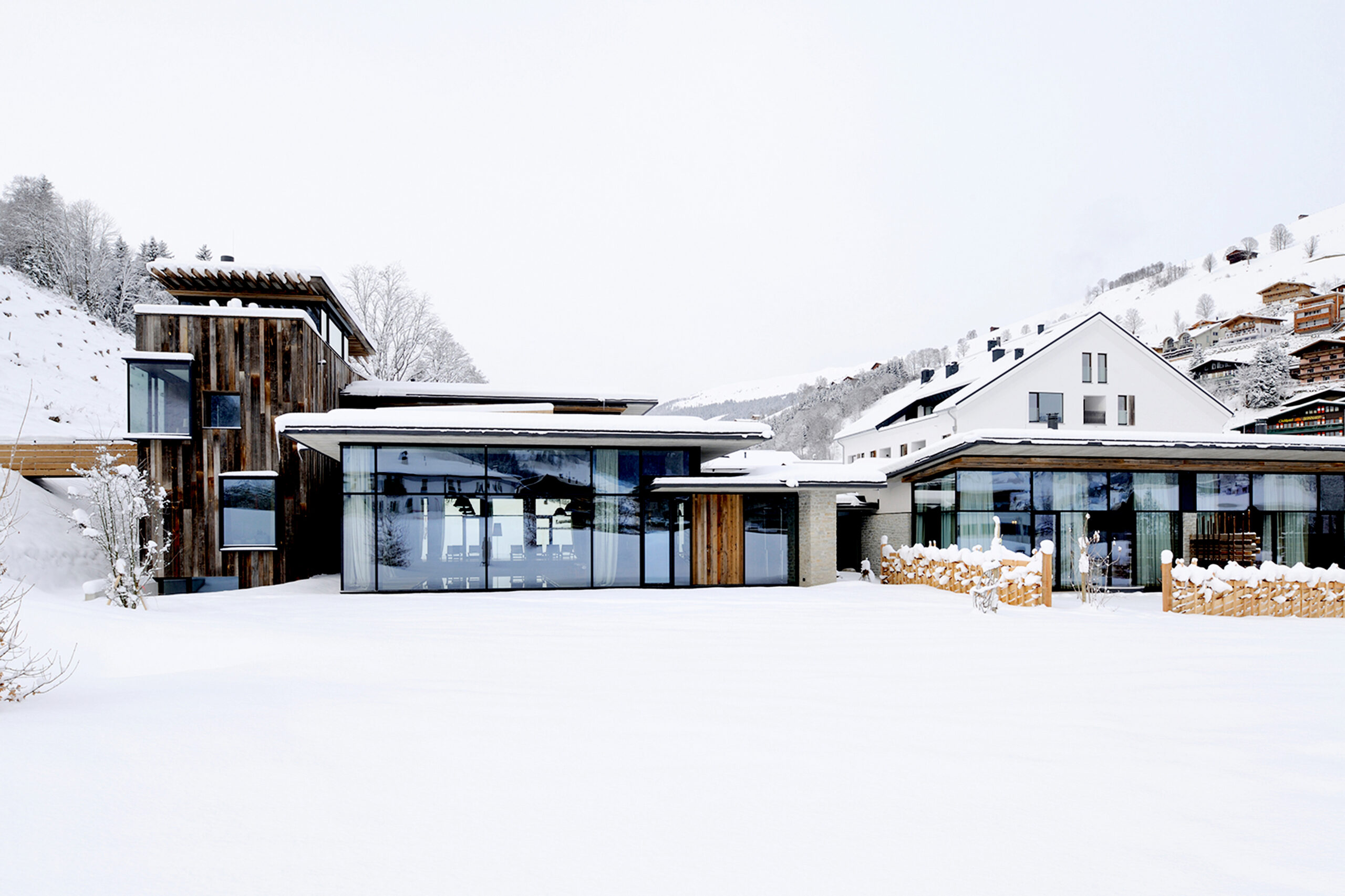
Weisergut, Saalbach-Hinterglemm, Austria: Josef and Martina Kröll converted their fourteenth-century family estate into a retreat steeped in the area’s local traditions. The interiors are designed by Innsbruck, Austria-based Gogl Architekten.
Courtesy Design Hotels
Picking Partners
We still get hundreds of applications every year. If the concept makes sense in the city, in the building, in the size of the rooms, in the proportion of public areas to rooms, we look into the architecture and interior design. If the whole thing makes sense as a holistic package, we look next at the branding aspect. How do they smell? What are the gimmicks? Finally, we look into local integration, sustainability, and ultimately the person behind the hotel, their track record, their philosophy. If they fit into our matrix, we work together.
ACE HOTEL
Alex Calderwood, Cofounder
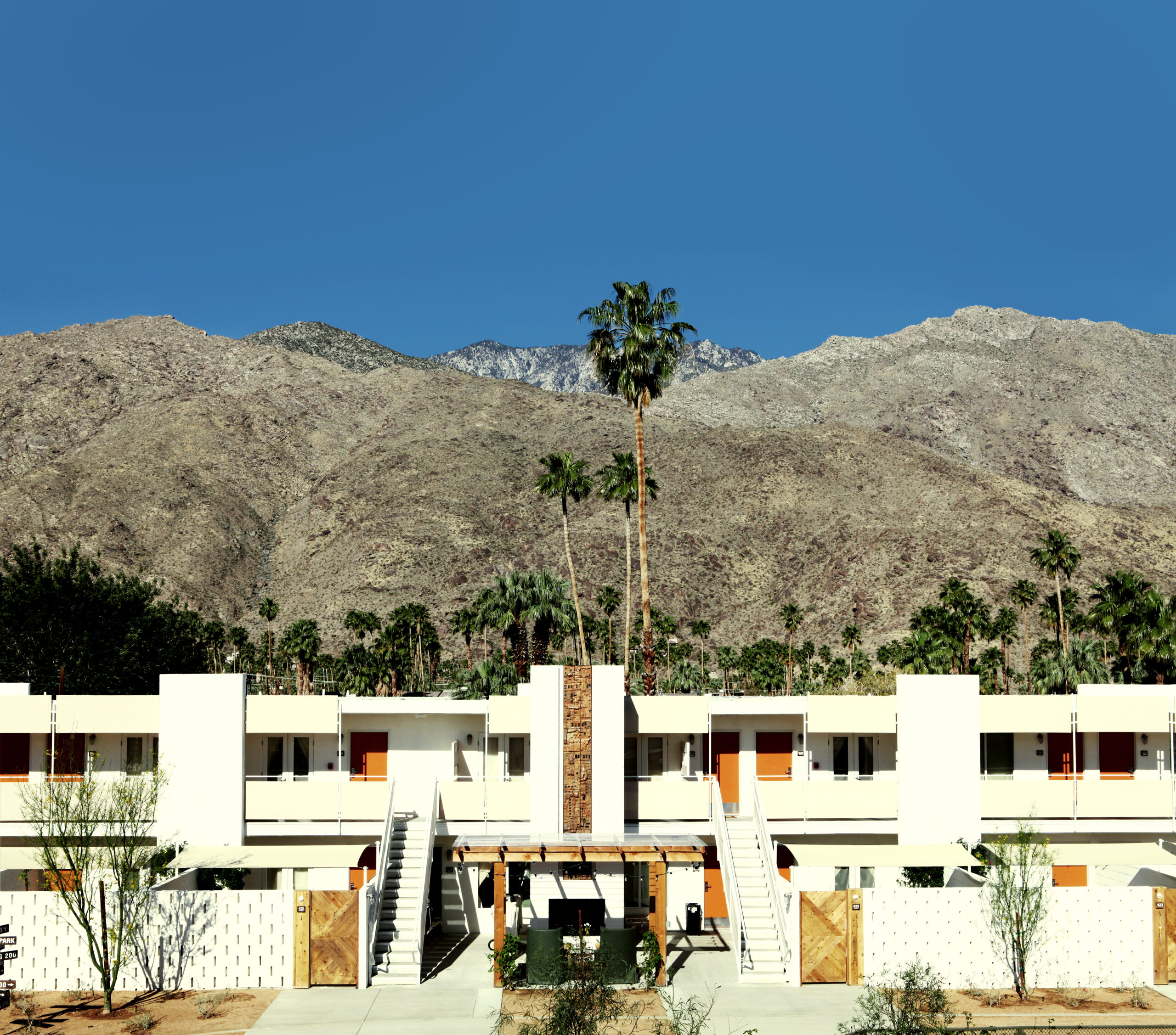
Ace Hotel & Swim Club, Palm Springs: Ace Hotels’ first California property, a collaboration between L.A.-based design firm Commune and Ace’s own team, Alterior Ace, is a 170-room hotel on the grounds of a renovated midcentury modern motel. This year, the group will open a second hotel in the Golden State, bringing new life to the United Artists Building in downtown Los Angeles.
Courtesy D.L. Thompson & Jon Johnson
Turning Off the Noise
We try to let each Ace act as a kind of tuning fork for the spirit of its surroundings. The property is one part and helps provide a context to inform the narrative and individual choices that make up the design. When we set out to create a project, we turn off the noise and look at what’s best for that particular project. We’re not asking: “What are the trends?” We’re more interested in ideas, in thinking about what would be most interesting for this hotel.
Wishful Thinking
Looking for properties that in some way represent the city they are in would be ideal. But the way that real-estate deals work, it’s not always that clean and smooth. Often-times you have a sort of vision of what you imagine in that city and that may or may not be where you end up.
Community Engagement
Our hotels are portals to the cities we’re in. They create a catalyst between locals and travelers. Being an actual participant in the cultural ebb and flow is key to connecting to the larger context of the city. Every hotel is different. Each one is a different animal. The crucial thing is being a participant in that city. And through that the answers will show up.
Salvage Culture
Creative salvage is at the foundation of our brand. Not only does it make sense from an environmental standpoint, but it also dovetails with our design ethos. We work with existing buildings. We salvage materials. We like the idea of decorating with used furniture. Not having to make, order, and install new everything is a great way to be green. We’re always looking at emerging technologies as well, and scouting for more ways to operate sustainably.
IAN SCHRAGER
CEO, Ian Schrager Company
 Ian Schrager has done more to transform the hospitality business than anyone in the past 30 years. The boutique hotel, it could be argued, was his invention—and in creating this new category, he raised the design bar for everyone else. Today the hotelier/developer/design patron/sniffer-of-the-Zeitgeist remains almost insanely busy—developing 11 hotels for Marriott under the Edition brand; four properties for his private label, Public; and two high-end residential projects (one in Miami, designed by John Pawson, the other in New York City by Herzog & de Meuron).—MCP
Ian Schrager has done more to transform the hospitality business than anyone in the past 30 years. The boutique hotel, it could be argued, was his invention—and in creating this new category, he raised the design bar for everyone else. Today the hotelier/developer/design patron/sniffer-of-the-Zeitgeist remains almost insanely busy—developing 11 hotels for Marriott under the Edition brand; four properties for his private label, Public; and two high-end residential projects (one in Miami, designed by John Pawson, the other in New York City by Herzog & de Meuron).—MCP
Courtesy Ian Schrager Company
Home-Field Advantage
All cities have different customs, different cultural cues. And you have to embody them in your hotel, because if the hotel doesn’t give a sense of what the city is all about, if it isn’t a microcosm of the city, then it’s a missed opportunity. When people go to San Francisco, they want to feel like they’re in San Francisco. To me it’s critical to give a sense of place, and also a sense of time. If you don’t do that, then you really miss a golden opportunity to distinguish your property.
Waltzing with Gorillas
It’s difficult for a big company to create distinct properties, because everything needs to be institutionalized and systemized in the brand book. There’s a feel involved, a touch, a kind of intuition. That’s hard for big companies to pull off. I’ve seen it in the entertainment business, where a company can get really big and still not lose that touch. But I haven’t seen it in the hotel industry yet. I’m hoping to pull that off with Marriott, to tell you the truth.
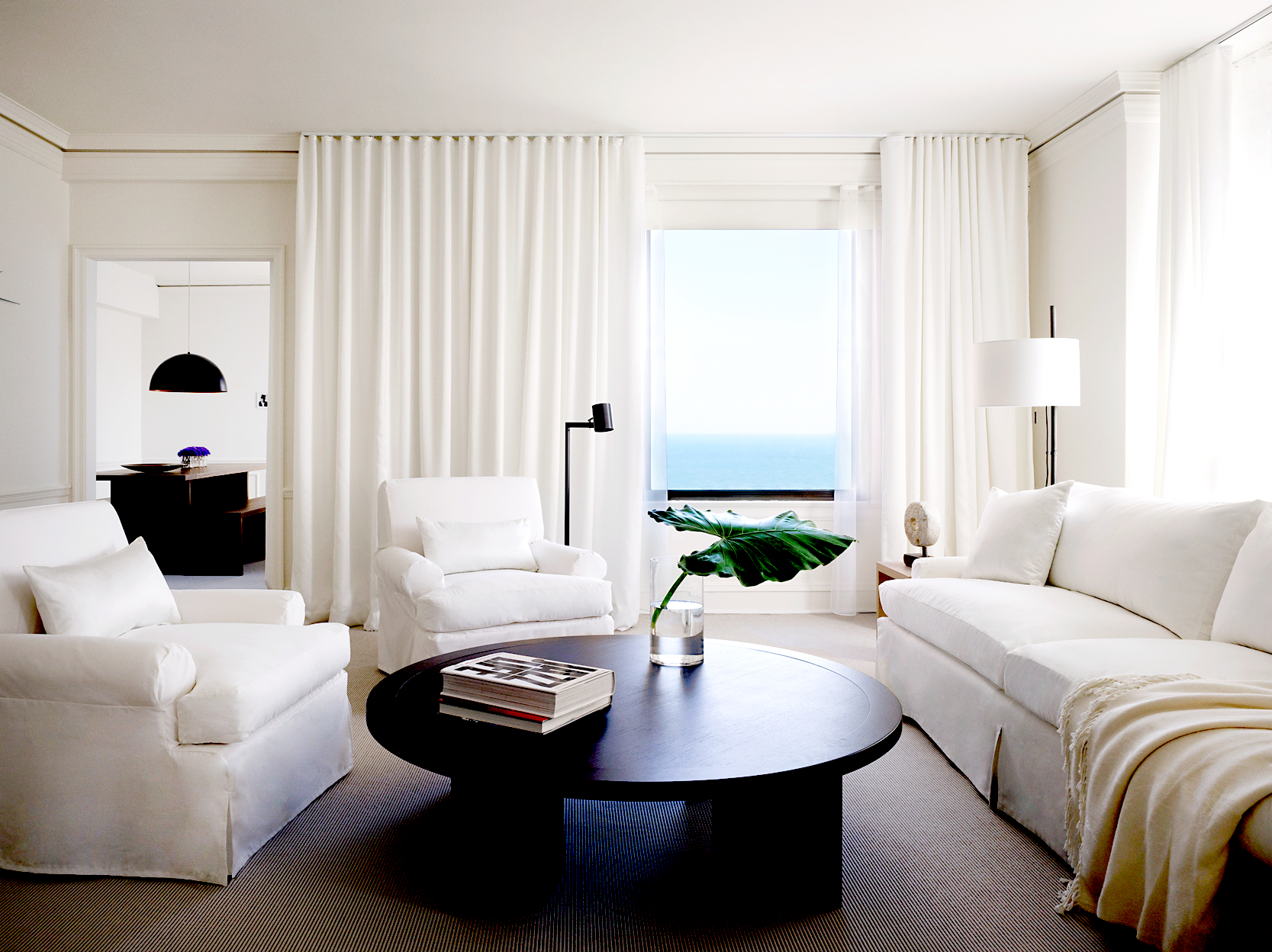
PUBLIC, Chicago: One of the rooms.
Courtesy PUBLIC Hotels
Mutual Admiration Society
I like the Ace. They came from Seattle, they came from that kind of grunge culture, which they imbued the lobby with. But instead of having it at night, for drinking alcohol and eating in a restaurant, which we did, they turned it into a big coffeehouse, and said, we’re going to do it through the day as well. I think it’s great. It gives the hotel an added dimension.
Brilliant Persuasion
Sustainability is critically important, but not as a marketing tool. It’s important because you can’t get great designers to do something that doesn’t have sustainability. It violates their ethics. We’re working on a project with Herzog & de Meuron now. It has to be sustainable. A truly great architect has a hard time working on a building that’s not sensitive to the environment. It’s a kind of contradiction in terms. I don’t think you’re going to get anybody good to do that.





